Earthquake and tsunami preparedness social media package
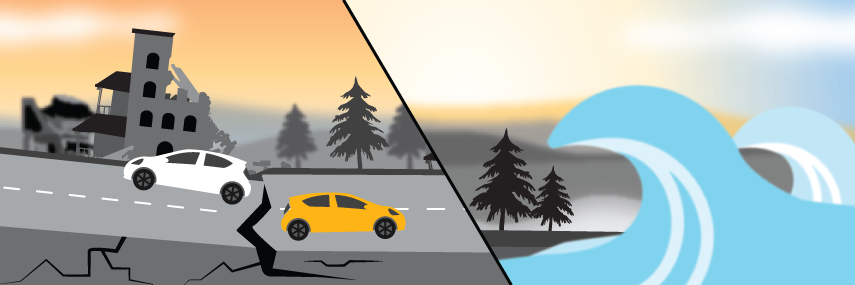
Getting prepared for earthquakes and tsunamis is an important step toward building resilient communities. To help, we created an easy-to-use social media package with graphics and pre-written content.
Post this content directly to your own social media channels or follow @PreparedBC on Facebook, Instagram and X (formerly Twitter) to share our posts!
Instructions for posting
- Copy-and-paste the content below in a new post
- Download, then attach the graphics below
- Option: add information, photos and hashtags specific to your community
- Double check the links and tagged accounts before you post
Graphics
Canadian Earthquake Early Warning
Use the social media graphic or download the printable poster to share awareness of the new program! Watch and share the Earthquake Early Warning video on YouTube.
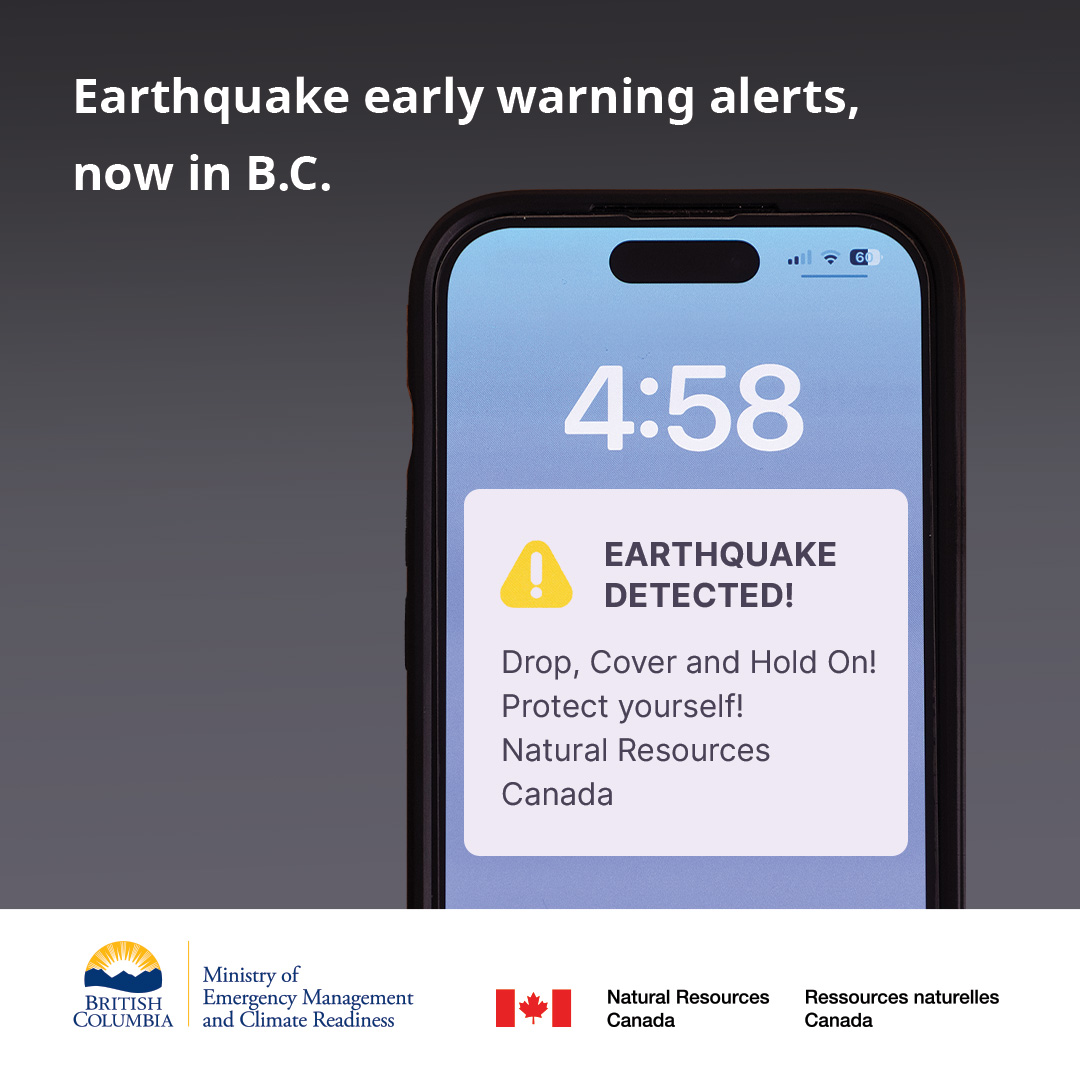
X (formerly Twitter)
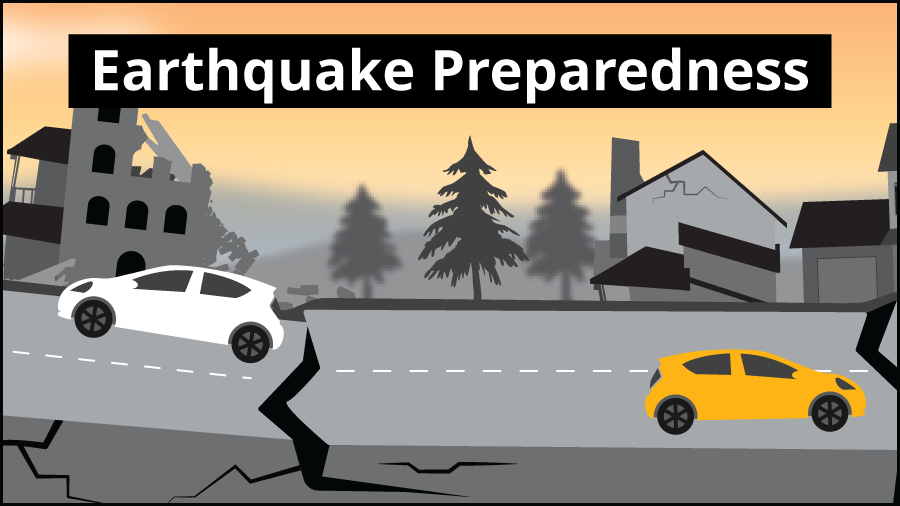
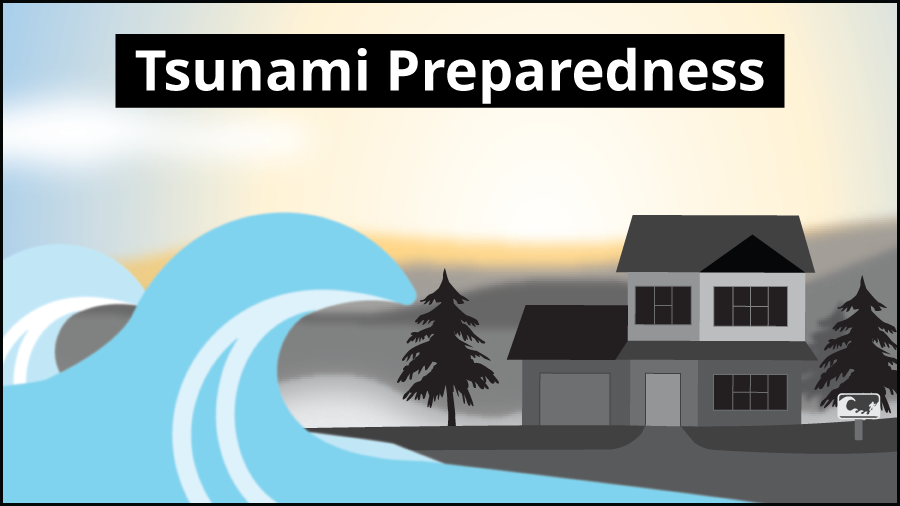
Facebook or Instagram
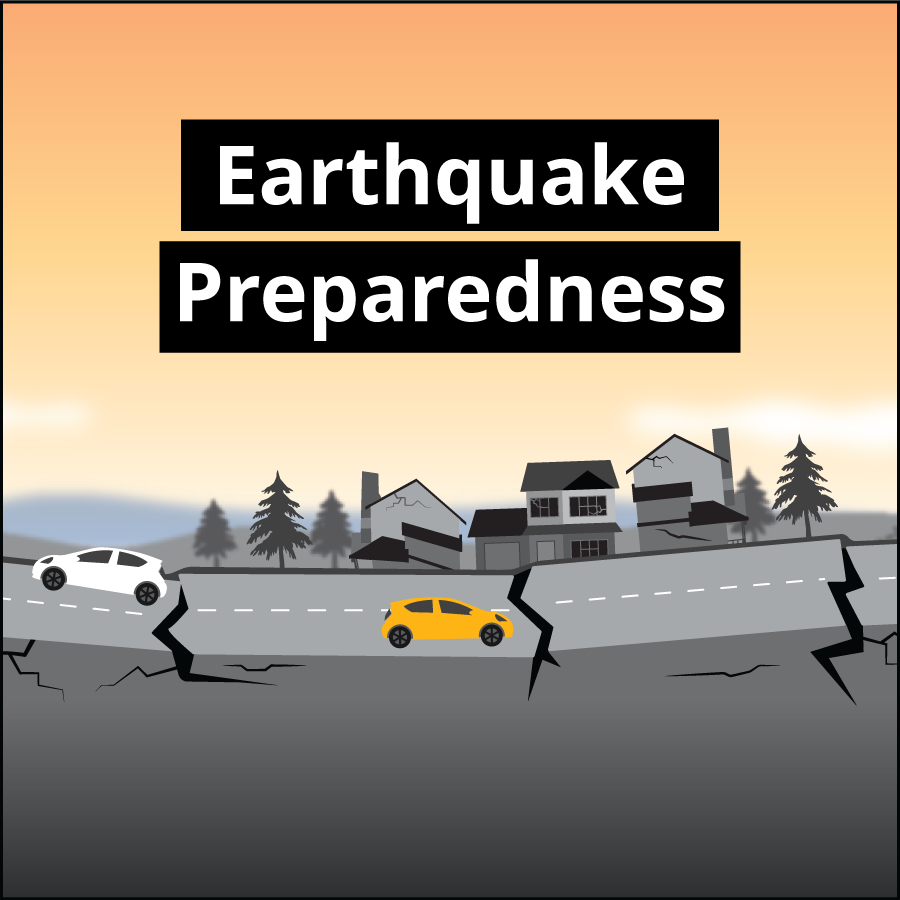
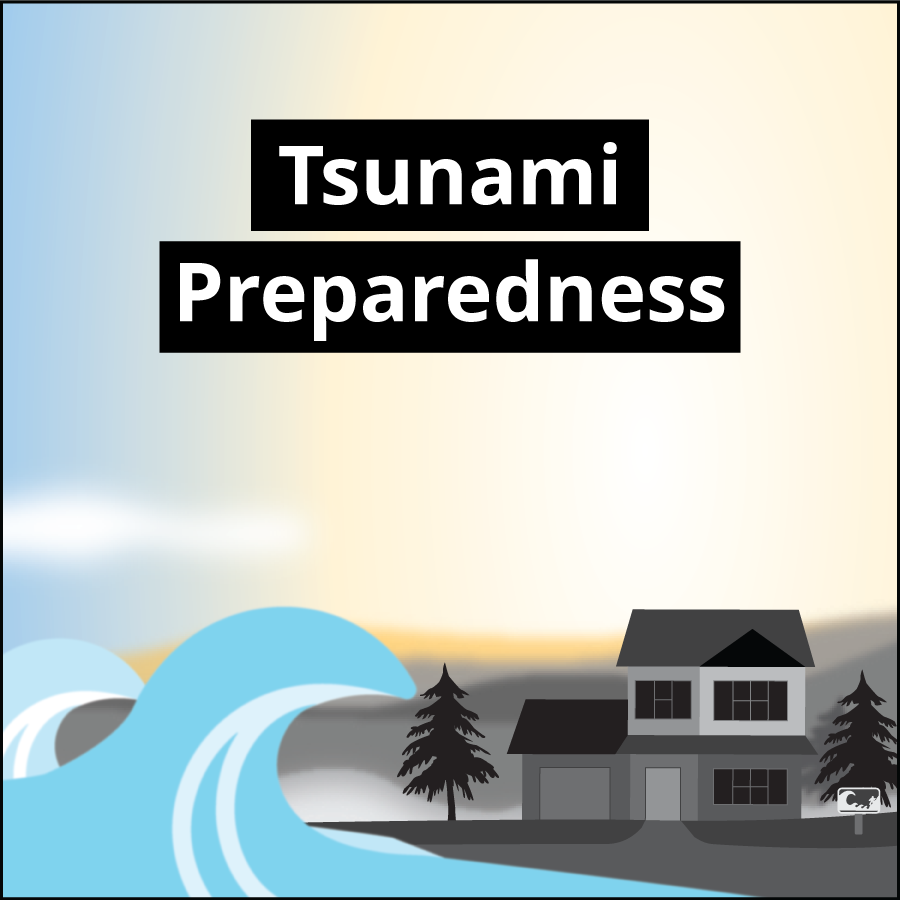
Content
Earthquake
X
The Canadian Earthquake Early Warning (EEW) system alerts for earthquakes that are likely to cause damage.
If you receive an EEW alert, immediately Drop, Cover and Hold on.
Learn more: Canada.ca/Earthquake-Early-Warning
Strong shaking from an #earthquake can topple furniture & appliances. It can also toss heavy items from walls, shelves & cupboards. Learn how to prepare your home: PreparedBC.ca/Earthquakes
Do you know how to turn off your gas, water and electricity if you need to after an #earthquake? Learn more: PreparedBC.ca/Earthquakes
Make sure your bed is a safe place if an #earthquake happens at night. Never hang pictures or mirrors above where you sleep. Learn more: PreparedBC.ca/Earthquakes
An emergency plan will help you and your loved ones respond confidently and recover faster after an #earthquake. Make your plan today: PreparedBC.ca/EmergencyPlan
If an #earthquake happens, you and your loved ones will need an emergency plan so everyone knows how to respond safely. PreparedBC can help with its easy, fill-in-the-blanks plan or interactive Emergency Ready Planner: PreparedBC.ca/EmergencyPlan
If you’re separated from loved ones after an earthquake, how will you get in touch? What if phone lines are jammed? Make a plan & ensure the people you live with knows who to contact: PreparedBC.ca/EmergencyPlan
Home insurance policies cover #earthquake damage & losses. Plan ahead and research your options by calling your insurance representative or contacting Insurance Bureau of Canada at 1-844-227-5422 or visit IBC.ca/BC
Will you need your emergency kit or grab-and-go bag after an #earthquake? That depends on where you are and where it’s safest to shelter. Watch this video for more: http://ow.ly/o3zW50CaIeE
If a damaging #earthquake makes your home unsafe to stay in, you’ll need to leave and find emergency shelter. You should take your grab-and-go bags with you. Learn how to build yours: PreparedBC.ca/Grab-and-Go
After an #earthquake, your home may be safe to stay in, but may not have power or water. In this case, you’ll need an emergency kit. Learn how to build yours: PreparedBC.ca/EmergencyKit
After an #earthquake, it’s important to follow directions from local authorities. Follow (ADD YOUR EMERGENCY SOCIAL MEDIA ACCOUNTS OR WEBSITES) to make sure you receive the latest information, quickly
During an emergency like an #earthquake, getting accurate information is vital. For provincial emergency information follow @EmergencyInfoBC. For local information follow (ADD YOUR EMERGENCY SOCIAL MEDIA ACCOUNTS OR WEBSITES)
If you feel shaking, don’t wait! Drop, Cover and Hold On under the nearest sturdy piece of furniture. Learn more about preparing your home & the people you live with for an #earthquake: PreparedBC.ca/Earthquakes
During an #earthquake, many injuries occur when people try to run or go outside. When you feel shaking, Drop, Cover and Hold On. Learn more about earthquake response: PreparedBC.ca/Earthquakes
If you’re in a wheelchair, in a movie theatre or in bed when an #earthquake happens, you might not be able to Drop, Cover and Hold On. Learn what to do in these situations & more: PreparedBC.ca/Earthquakes
Are you registered for ShakeOutBC? Join thousands of British Columbians and practice Drop, Cover and Hold On every October. Visit ShakeOutBC.ca to register
After an #earthquake, and after you’ve done your Drop, Cover and Hold On, then what? Count to 60 before getting up, allowing displaced objects to settle. Learn more about the next steps to take: PreparedBC.ca/Earthquakes
If you’re near the coast and feel an #earthquake – do not wait! Drop, cover and hold on; when the shaking stops, count to 60, then move immediately to higher ground – at least 20M above sea level. Learn how to prepare for tsunamis: PreparedBC.ca/Tsunamis
After an #earthquake, assess your environment and follow directions from local authorities. Do not call 911 to report the earthquake. Only call 911 for serious injuries. Learn more about responding safely: PreparedBC.ca/Earthquakes
Facebook and Instagram
The Canadian Earthquake Early Warning system is designed to alert for earthquakes that are likely to cause damage. It can save lives and reduce injuries by giving people seconds to tens-of-seconds of warning to take protective actions.
If you receive an alert, immediately take action to Drop, Cover and Hold on.
Learn more: Canada.ca/Earthquake-Early-Warning
Having an emergency plan and kit aren’t the only ways to get prepared for an earthquake. Did you know there are things you can do to prevent damage inside your home? Learn what steps to take, as well as how to respond safely when the earth starts shaking.
PreparedBC.ca/Earthquakes
Preparing your home before an earthquake happens can reduce potential damage and injuries. Take these steps to make sure your home is as safe as possible:
✅Secure bookcases and other large furniture to walls using L-brackets
✅Move heavy glass and canned goods from high shelves or cupboards to lower ones
✅Do not hang pictures or mirrors above beds
Visit PreparedBC.ca/Earthquakes for more home safety tips.
After an earthquake, you and the people you live with may have to respond quickly to stay safe and reconnect. How will your loved ones respond if:
- Your home is not safe to stay in?
- Some members are at school, work or daycare?
- Someone needs to turn off the gas?
- No one’s home and your pets require care?
Having a plan means the people you live with won’t panic and will know what to do. Get started today with PreparedBC’s easy, fill-in-the-blanks template or interactive Emergency Ready Planner: PreparedBC.ca/EmergencyPlan
If you’re separated from loved ones after an earthquake, how will you get in touch? What if phone lines are jammed?
The people you live with should have an emergency contact list and multiple methods of getting in touch. Consider making a group chat, too!
Get started on your plan today: PreparedBC.ca/EmergencyPlan
After an earthquake do you need your emergency kit or grab-and-go bag?
That depends on where you are and where it’s safest to shelter after the shaking stops.
✔️Is your home structurally sound? If yes, it’s best to stay where you are and use your emergency kit if you’re without power or water.
✔️Has your home sustained severe damage and is not safe to stay in? Then it’s time to leave with your grab-and-go bags, following directions from local officials.
Learn how to build both: PreparedBC.ca/EmergencyKit
After an earthquake, your home may be safe to stay in, but not have power or water. In that case, you’ll need to use your emergency kit. Get started with this basic list:
✔️Non-perishable food for a minimum of 3 days to a week.
✔️Water: 4 litres per person, per day, for a minimum of 3 days to a week.
✔️Hand-crank or battery-operated radio and flashlights
✔️Batteries and battery bank for device charging
✔️First aid kit & extra medications
✔️Personal hygiene and sanitation items
✔️Seasonal clothing, footwear and blankets
Visit PreparedBC.ca/EmergencyKit for a full list of items and personal considerations.
During an earthquake, follow all directions from local authorities. To make sure you receive the latest information, bookmark these accounts now:
✅ (ADD YOUR EMERGENCY SOCIAL MEDIA ACCOUNTS OR WEBSITES)
✅@EmergencyInfoBC on X (formerly twitter)
Don’t forget, if one type of communication is down, others may still be working. Check local TV channels and radio stations, as well as social media accounts, websites and text alerts for important safety information.
If you feel the unmistakable shaking of an earthquake, don’t wait! Immediately Drop, Cover and Hold On – preferably under a sturdy piece of furniture like a table or desk. Many injuries occur when people try to run.
When the shaking stops, count to 60 before getting up, allowing displaced objects to settle. Check around you and consider if the building is safe or if you should leave. Be aware that aftershocks are likely.
Learn more about earthquake preparedness at PreparedBC.ca/Earthquakes
When an earthquake strikes, you might not be able to Drop, Cover and Hold On. What should you do if you’re:
❓ In a wheelchair
❓ In bed
❓ In a movie theatre
❓ At the beach
❓ In transit
Learn what to do in these situations and more at PreparedBC.ca/Earthquakes
Are you registered for Shake Out BC? Don't delay, sign up today at www.shakeoutbc.ca. When you're done, download the @PreparedBC Earthquake & Tsunami Guide. It has great advice on how to prepare your home and the people you live with before the ground shakes. PreparedBC.ca/Earthquakes
There are many things to consider for your immediate safety after an earthquake:
⚠️ Is the building safe to stay in?
⚠️ Do you need to connect with your loved ones who may not be with you?
⚠️ Can you check local TV, radio or social media for safety information?
First, make sure you’re physically okay, and in a place that is safe to stay. Then, follow the pre-determined steps in your emergency plan to take the guesswork out of your response. Learn more: PreparedBC.ca/Earthquakes
Tsunami
X
Your #tsunami preparedness plan should include knowing how to get to high ground after an earthquake or Tsunami Warning. Contact us for info: (INCLUDE YOUR COMMUNITY’S WEBSITE AND/OR THE COMMUNITY EVACUATION PLAN).
If you receive a Tsunami Warning, you’ll need to get to high ground quickly. Having a grab-and-go bag will keep you more comfortable after evacuating. Learn how to build one and where to keep it: PreparedBC.ca/Grab-and-Go
If you aren’t at home during a Tsunami Warning, do you know what to do? Does everyone in you live with know how to get to high ground? Where will you meet when it’s safe? Make a plan & practice your #earthquake & #tsunami response. PreparedBC.ca/EmergencyPlan
If a #tsunami is caused by an #earthquake that wasn’t felt on land, you’ll be notified by TV, radio and text on compatible devices. Follow @EmergencyInfoBC and (add your local social media accounts)
In (YOUR COMMUNITY) you will be notified of a tsunami threat by (WEBSITE, RADIO, TEXT MESSAGE, LOCAL EMERGENCY ALERT SYSTEM, SOCIAL MEDIA ACCOUNTS?) Visit (ADD YOUR WEBSITE OR LOCAL EMERGENCY ALERT REGISTRATION) to learn more.
Because we live on B.C.’s coast, it’s important to know we are in #tsunami notification zone (INSERT LOCAL ZONE). During a tsunami warning, not all zones could be affected. Learn about the notification zones here: PreparedBC.ca/Tsunamis
Do you know the difference between a #tsunami Warning & Tsunami Watch? Learn about the different types of tsunami alerts: PreparedBC.ca/Tsunamis
If you are near the coast & just felt an earthquake, or have been notified of a Tsunami Warning: DO NOT WAIT, Drop, Cover & Hold On; when the shaking stops, count to 60 before getting up, then go immediately to (ADD YOUR COMMUNITY'S PRE-IDENTIFIED SAFE AREA). Learn more: PreparedBC.ca/Tsunamis
During a #Tsunami Warning, do not go to the shore! Waves move faster than you can run. Move to your high ground location & stay there until officials tell you it’s safe to leave. Learn more: preparedbc.ca/tsunamis
During a #Tsunami Warning, follow all directions from local officials. Do not call 911 to report an earthquake, only call 911 for serious injuries. Follow @EmergencyInfoBC (ADD YOUR LOCAL SOCIAL MEDIA ACCOUNTS) for the latest information.
Facebook and Instagram
Are you prepared in case of a tsunami? Take these steps:
�� Make sure everyone you live with knows their high ground location at (ADD HIGH GROUND/LOCAL RECEPTION CENTRE LOCATIONS)
�� Make sure everyone you live with knows the route to their high ground location – even if they’re at work or school
�� Make sure everyone you live with has a grab-and-go bag
Learn more: PreparedBC.ca/Tsunamis
Know where to get information before a Tsunami Warning is issued, so you know where to go for accurate updates. Bookmark these accounts for quick access.
You’ll find local information at (ADD YOUR LOCAL SOCIAL MEDIA ACCOUNTS AND WEBSITE)
Make sure to follow @EmergencyInfoBC for provincial information.
Because we live on B.C.’s coast, it’s important to know we are in tsunami notification zone (ADD YOUR LOCAL ZONE). During a Tsunami Warning, not all zones could be affected. It’s important to understand where the different zones are located, especially if you travel to other areas of the coast.
Learn about the 5 notification zones: PreparedBC.ca/Tsunamis
DYK there are different levels of tsunami alerts? Knowing the difference will help you respond quickly and safely if one is issued:
⚠️ Warning
⚠️ Advisory
⚠️ Watch
⚠️ Information Statement
⚠️ Cancellation
Learn what these alerts mean & what action to take for each: PreparedBC.ca/Tsunamis
✅ If you just felt an earthquake, don’t wait! Drop, Cover and Hold On; when the shaking stops, count to 60 before getting up, then move immediately to high ground with your grab-and-go bags.
✅ Follow all directions from officials and monitor these accounts for the latest information: @EmergencyInfoBC, (add your local social media emergency accounts)
✅ Stay at your high ground location until officials tell you it’s safe to leave. Do not go to the shore.
✅ Do not call 911 to report an earthquake; only call 911 for serious injuries.
For more information: PreparedBC.ca/Tsunamis
(ADD YOUR LOCAL WEBSITE WITH EMERGENCY INFORMATION)
